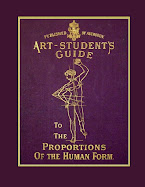


Johann Caspar Lavater. Essays on Physiognomy, designed to promote the knowledge and the love of mankind. Translated from the French by Henry Hunter.
From Wikipedia:
Lavater's name would be forgotten but for his work in the field of physiognomy, Physiognomische Fragmente zur Beförderung der Menschenkenntnis und Menschenliebe (1775-1778). The fame of this book, which found admirers in France and England as well as Germany, rests largely upon the handsome style of publication and the accompanying illustrations. The two principal sources from which Lavater developed his physiognomical studies were the writings of the Italian polymath Giambattista della Porta, and the observations made by Sir Thomas Browne in his Religio Medici (translated into German in 1748 and praised by Lavater).

Physiognomy In Profile: Lavater's Impact On European Culture



A death mask behind the face of pretty girl symbolizing the ephemeral nature of beauty. From Wikipedia.
Physiognomy and facial recognition began to be discussed again in the aftermath of 9-11 and the stereotyping or suspects. Here is an essay on the subject: - The Physiognomy of Biometrics with a reference to Lavater.
The Wellcome Library has a lot of images.








Das Antlitz Gottes im Antlitz des Menschen: Zugange zu Johann Kaspar Lavater (Arbeiten zur Geschichte des Pietismus) (German Edition)

The Wisdom of Your Face: Change Your Life with Chinese Face Reading!

Physiognomy and the Meaning of Expression in Nineteenth-Century Culture (Cambridge Studies in Nineteenth-Century Literature and Culture)
Google Books Physiognomy or the Corresponding Analogy between the Conformation of the Features and the Ruling Passions of the Mind by Johann Casper Lavater.
Other posts on physiognomy.











































